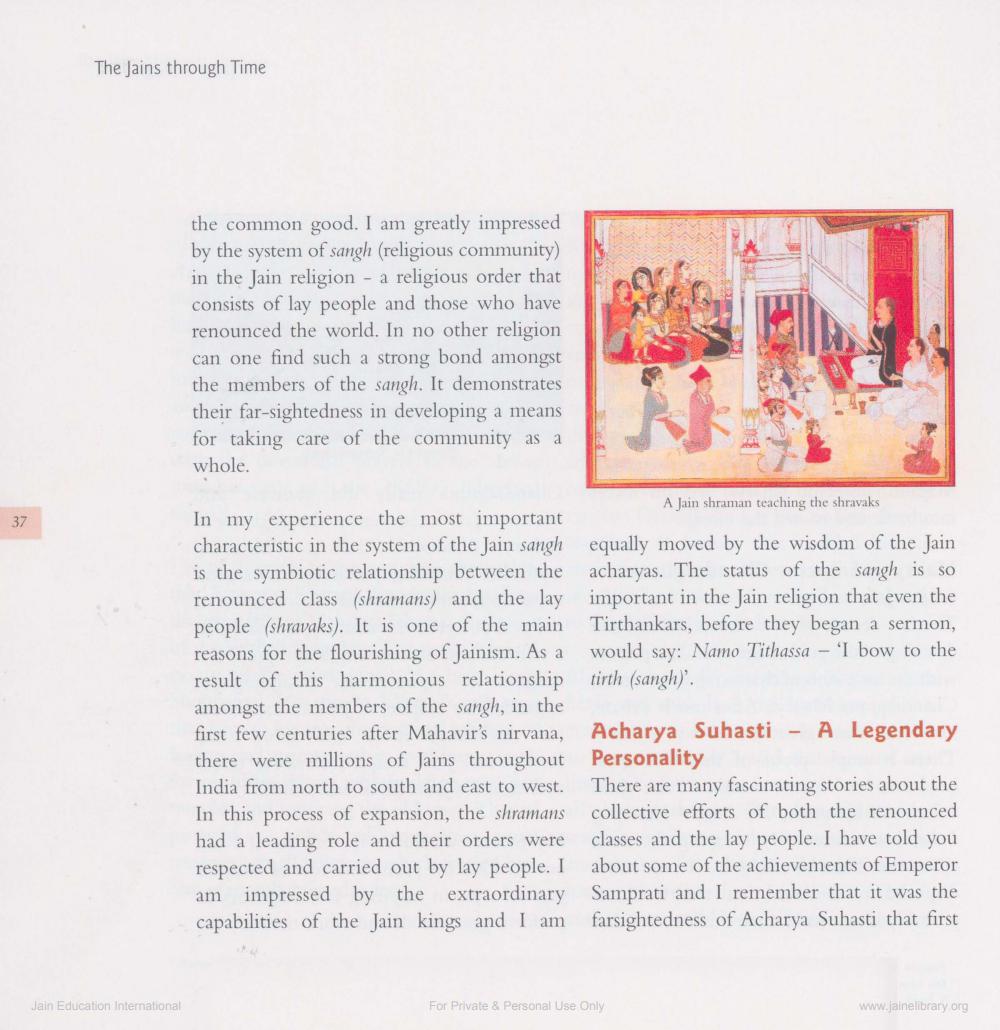________________
The Jains through Time
the common good. I am greatly impressed by the system of sangh (religious community) in the Jain religion - a religious order that consists of lay people and those who have renounced the world. In no other religion can one find such a strong bond amongst the members of the sangh. It demonstrates their far-sightedness in developing a means for taking care of the community as a whole.
A Jain shraman teaching the shravaks
37
equally moved by the wisdom of the Jain acharyas. The status of the sangh is so important in the Jain religion that even the Tirthankars, before they began a sermon, would say: Namo Tithassa – 'I bow to the tirth (sangh).
In my experience the most important characteristic in the system of the Jain sangh is the symbiotic relationship between the renounced class (shramans) and the lay people (shravaks). It is one of the main reasons for the flourishing of Jainism. As a result of this harmonious relationship amongst the members of the sangh, in the first few centuries after Mahavir's nirvana, there were millions of Jains throughout India from north to south and east to west. In this process of expansion, the shramans had a leading role and their orders were respected and carried out by lay people. I am impressed by the extraordinary capabilities of the Jain kings and I am
Acharya Suhasti - A Legendary Personality There are many fascinating stories about the collective efforts of both the renounced classes and the lay people. I have told you about some of the achievements of Emperor Samprati and I remember that it was the farsightedness of Acharya Suhasti that first
Jain Education International
For Private & Personal Use Only
www.jainelibrary org




